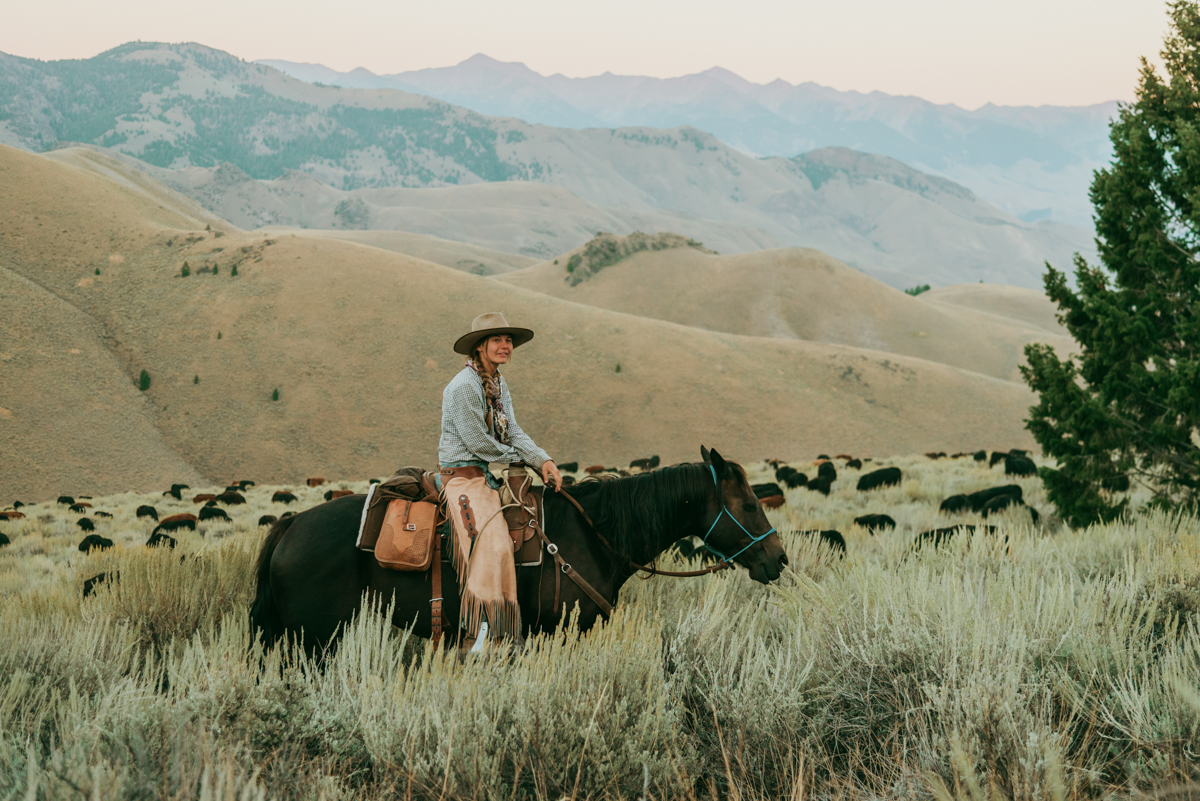
It was nearly midnight last night as I descended out of the Salmon River Mountains, leaving Camp 6, or the Iron Mountain Camp behind me. It took most of the afternoon to square away the new camp, only about 5 miles from the last one at Big Hat. I pounded the last tent pegs in the gathering darkness, as the cowhand crew of Ethan, Linnaea, and Melanie rode in with the herd.
The cattle drifted by me in 2s and 3s as I watched them in the dim light. I was just 10 feet away, leaning on a big fir tree, watching the line of them walk quietly by. I could see the weary column go on and on, fading in the trail dust, winding back and forth through the forest, disappearing into the black in the dark timber, now speckled by moonlight.
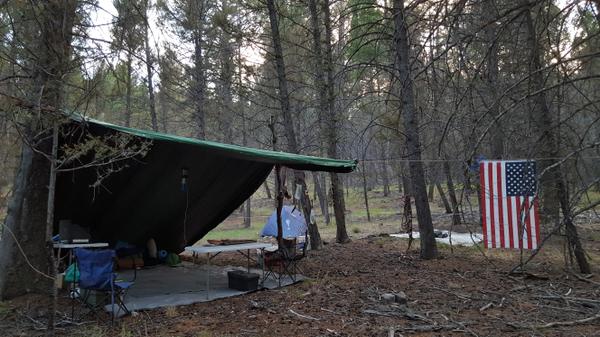
They looked at me unstartled, as they do each of us. I think they see us as herd mates, partners in this long journey of months through the untracked wilderness we call Hat Creek. It’s been nearly 70 miles so far, if you walked a straight line from Ranch to each of the camps. I estimate with the grazing that they do each day under the guidance of the crew, they have traveled more like 700 miles. It’s not super strenuous; it’s the gentle and quiet walk while grazing, that beeves are designed to do, but they are still ready for a soft bed in the pine duff that I have made for them.
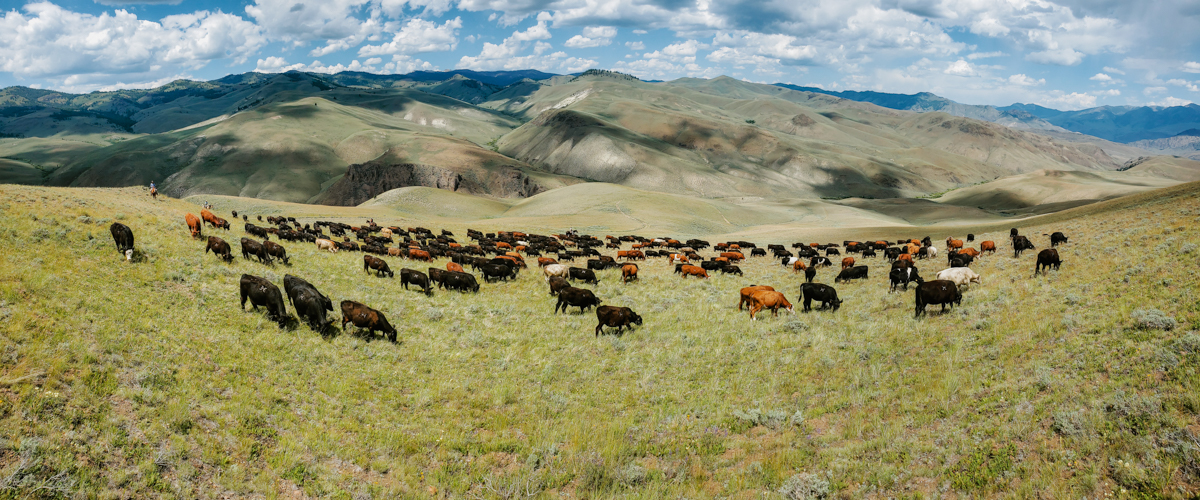
It is exactly that design of being a foraging animal that enables the life-giving task of seeking food; it allows choice. They choose here from the diversity of the wild ranges, and it is that choice, I believe, that is the foundation of flavor and nutrition. Contrast this to the monocultures that often dominate managed pasture; indeed, beef raised on these pastures or grain crop after-harvest residue can be called “grass fed,” but the lack of choice is likely what makes flavor absent and in great need of steak sauces and marinades.
I thought about all these things as I drove my seen-better-days ’95 diesel 4 wheel drive out on the rock pile we call a road. It’s about an hour and a half drive back to the ranch, and if you break a frame member or blow tires, it is a long walk out in a cell phone desert. It’s why we always carry 2 heavy duty spares. Several times, I have used up both spare tires in repeated blowouts and still ended up walking. Nobody will come. You are all alone on the range. I prayed that my tired bones wouldn’t have to walk 24 miles tonight.
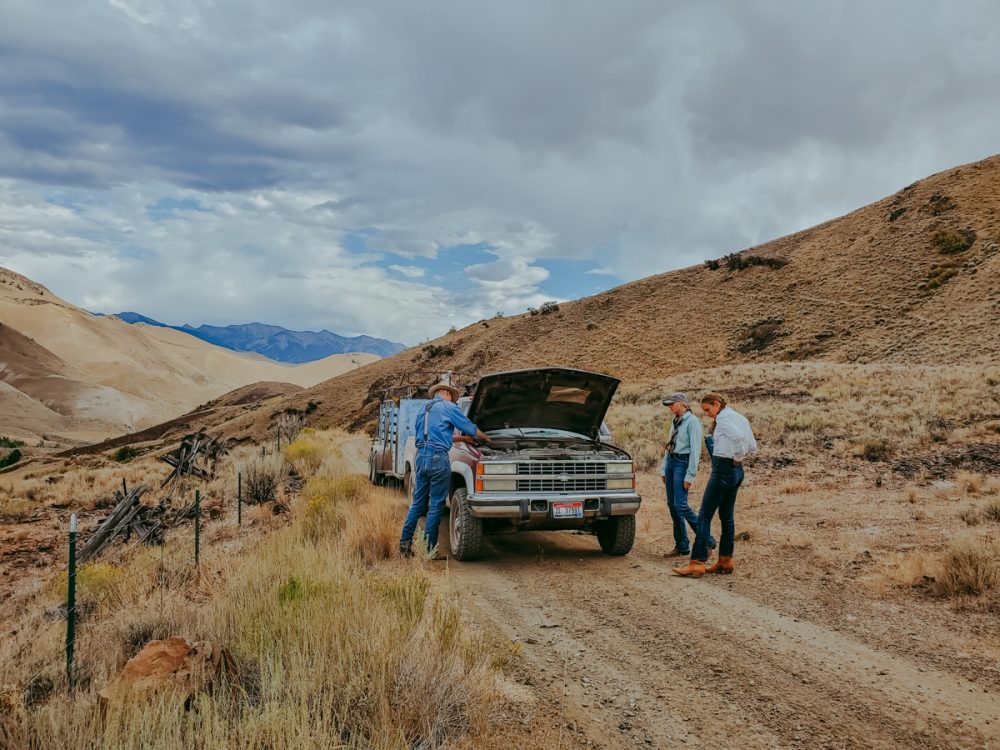
It’s usually a fight to stay awake, because invariably, after a day riding horse back or moving camps, I am tired. If I stop and sit down in a driver’s seat, my body sees stopping as a signal to sleep. I’ve often jumped out in the middle of nowhere and ran a few laps around truck in the chill mountain air to freshen mind.
I remember one night where I looked over at my comrade, Tim, in shotgun seat, head bobbing like a chicken and thumping on the window as we negotiated rock and rut. I was startled awake because I couldn’t remember the past few miles of the road–and I was driving. It was 2:30 AM. I drove awake with adrenaline the rest of the way back to the ranch.
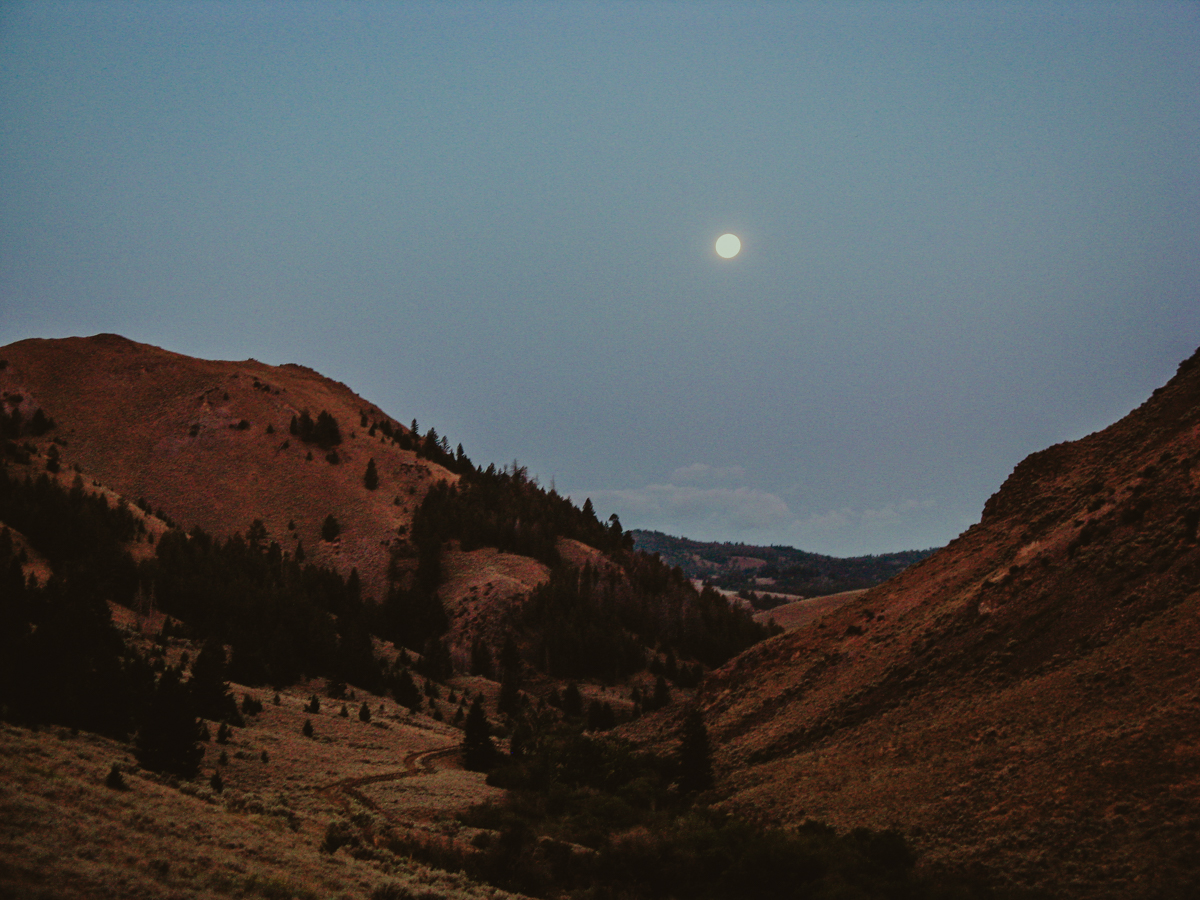
It’s easy to be foolish and complacent in the dark. The nighthawks and jackrabbits that jump across the road don’t seem alarmed about the precipitous nature of their surroundings. After all, all you see is the two rocky wheel tracks bounded by sage. What is invisible is the 1000 foot near vertical hill that lurks beyond the false security of the sagebrush guardrail.
The aloneness of the drive seeps through the vents. There are no lights, even though you can see for miles and miles high up on this road pasted to the side of a mountain. There is no radio to listen to, only static cracklings.
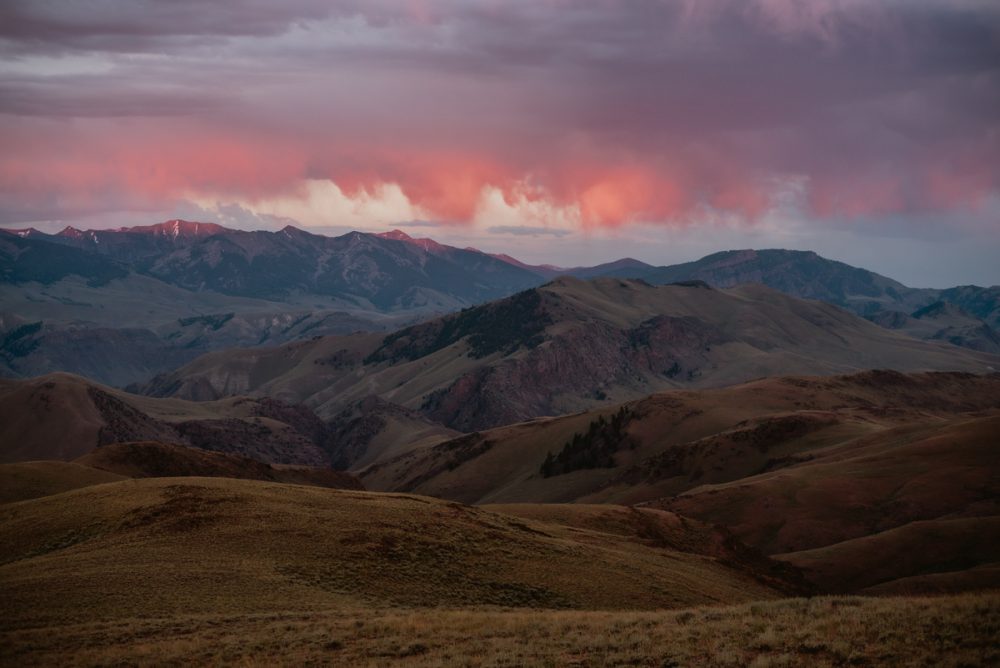
I pop in an ancient cassette; it’s the only one of those rattling in the side door pockets that still works. Muzzy Braun and his Idaho cowboy crooners fill the cab with rodeo rockabilly that makes the lonely of the sagebrush ocean a little more cherry. It’s the 90th time I’ve heard this blast from the past brought to you by the failed technology of cassette tape. I think now, in retrospect, it was only a baby step above 8 track. I still see occasional 8s, magnetic tape blowing, shimmering in the wind on a roadside here in the middle of nowhere Idaho mountain country. I’m guessing they fell from a pickup of the same vintage and condition as mine.
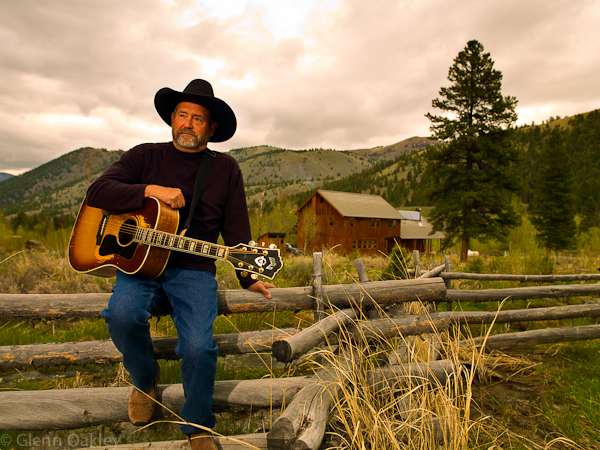
I tire of Muzzy after one play (I know what comes next–every word). I glance across the canyon in the half-moon light. There are some white rock volcanic cliffs several hundred feet high across the deep canyon that I can barely spy. They are ghost-like in the moonlight.
It was a night I well remember that I came by this same spot, 12 years ago, horseback on my exhausted mare, Missy.
We had ridden all day in search of strays, and had covered over 35 miles in rough country. We came down the timbered canyon we call Big Hat at a lope in the near darkness and found our robin-egg blue truck and trailer down by the bubbling creek with the keys in it, just as we had left it in the early morning. I pulled sweat-stained saddle pad and leather off her slick back, curried her down and pulled throat latch on hackamore, replacing her bridle with a halter. She loaded happily in the open trailer, eager for the ride home.
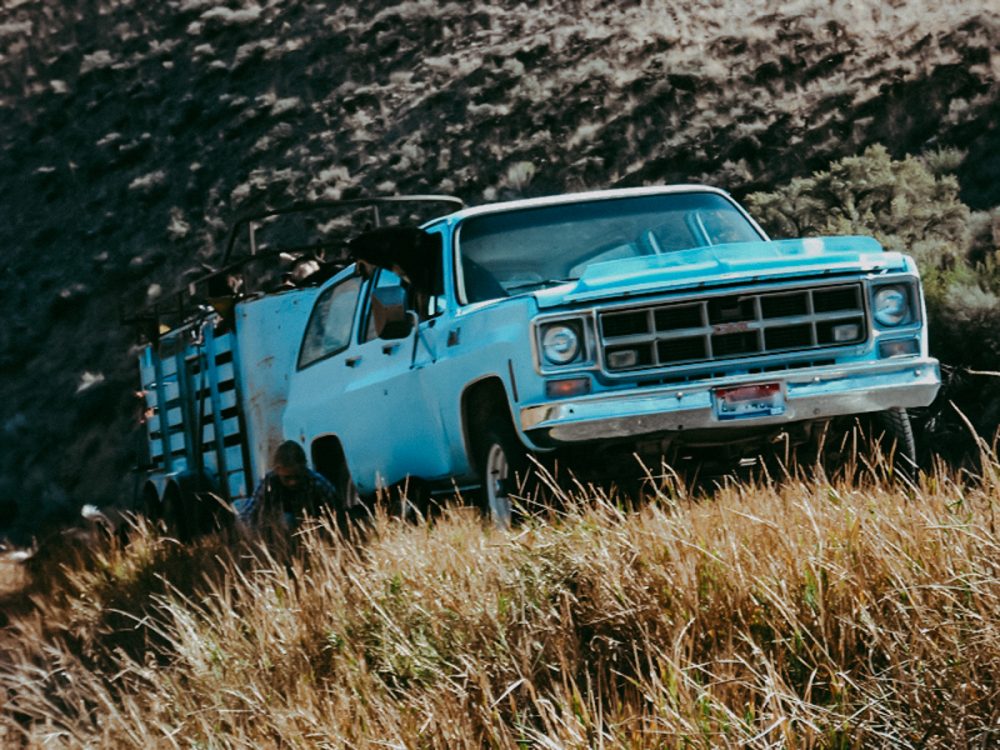
I jumped in the old truck and turned the key. It roared to a brief life, sputtered, misfired, and died. I tried again. Nothing. On popping the hood, I inspected what I could, half seeing in the dim and darkening light in the forest of old growth Douglas-fir trees, checking through wires, connections and finally the distributor. By feel, I unfastened the cap on this, the electronic brain for internal combustion engine.
I lifted it off gingerly, and even as I did, a little stream of shattered parts trickled down, rattling over the engine block and falling to the forest floor. Our chances for a ride out were over, and darkness was now complete. Only 24 more miles to go, with no cell service, on foot. Missy and I both felt fatigue to the bottom of our bones, but she was the grittiest horse I had ever been around. It didn’t matter what it was; she would die trying whatever I asked her to do. My job was to be sensitive to her fatigue, and stop asking her to ride before she fell over from it.
We set out on the long ride, jumping deer in the dark timber as we picked our way down the canyon trail we called a road. I was on and off through much of the night, partly to give her a break, but also because I remembered badger holes that could swallow a horse foot on certain parts of the trail, and in the low moonlight, I was concerned she may step in one with me on board and feared the worst–a broken leg on her. After passing the badger bombed road section, I mounted and rode on in the clear and partly moonlit night. It was right here, across from the big cliff-y bluffs made of welded volcanic ash when my eyes lazily wandered in the poor light across canyon.
I checked the reins and sat back in saddle to give the mare a much needed rest while I confirmed what my eyes first took in. There was one rock–not just a rock, but an entire part of the cliff, that appeared to glow, not with a reflection or moonbeam, but on its own accord. It was luminescent, and the outcrop fairly glowed outward with a distinct shape of a sculpted horse’s head.
Missy pawed the ground. She knew the way home, and was resolved to get there, sometime. I looked up the road, as she pawed again, and I rechecked her to get another look. After all, it was 2 am, and I have been known to see things at this time of night, especially after a longish day like this one. I looked again. Sure enough, it did glow. No other cliff or rock on the entire face glowed like that one.
It was like the color of the moon itself, but more muted. The moon made patterns of light and shadow in the sparse trees below the cliff, but the glow was much brighter, and limited to only that horse head shaped rock. I looked several times back at the rock as we ascended High Hat saddle. It continued to shine, almost to the point of casting a shadow, so much that I recall looking to the hillside for one cast by mare and rider.
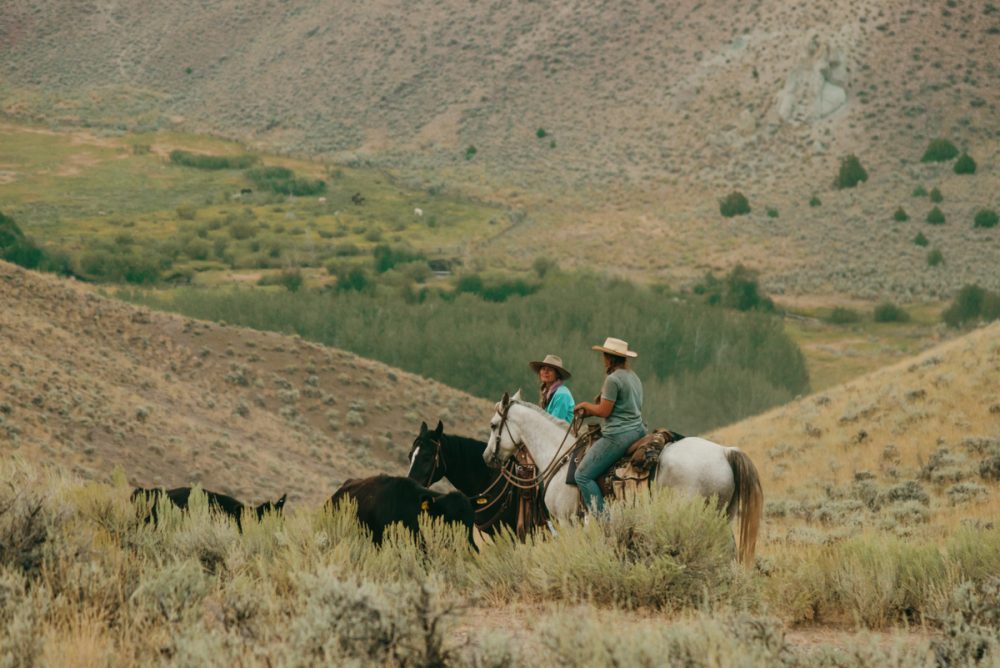
I stopped on the pass once more before we descended into the next canyon. It was the last I would ever see the light.
Caryl, concerned bride that she can be, came out to look for Missy and I that night. She finally found us at 3:30 am, and wisely brought our other gooseneck trailer behind pickup and took us the last 12 miles back to the ranch. I loaded my faithful Missy, and climbed into the pickup for the trip home. We were both exhausted, and said little on the trip home. I told her about the light–I called it the “ghost rock” and could feel her “you really gotta get some sleep” stare looking back at me in the faint light of the dashboard.
The ghost rock is one of those things that I can’t explain, and it’s OK. You see, much of what we do when we work in a wilderness has no guidelines, no systems, and no rule books. I have many things I see in that country that I can’t explain, and I don’t have to. The landscape and the native plants and animals that live in it always have lessons to teach.
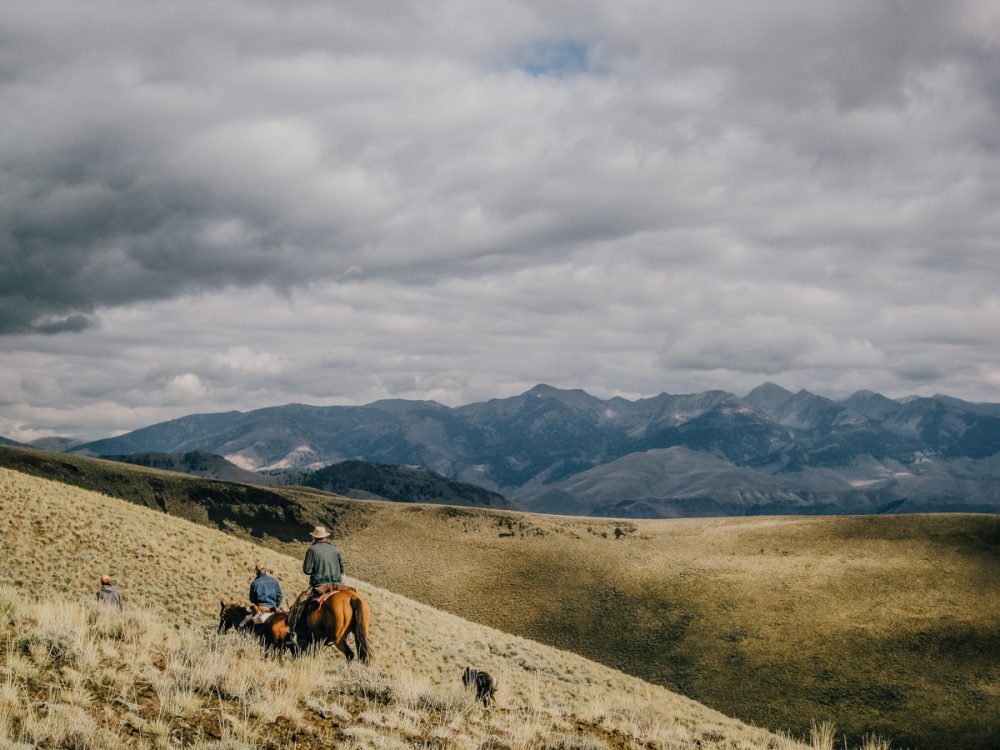
They don’t always come in order, but as we live up there with the beeves, slowly, but quite certainly, a tapestry of story builds in our mind that gives us the ability to unlock secrets, mysteries of what it takes to make our living up there and even the beef that we bring back from it better. I can’t tell you what the compounds are that flavor our beef, or make it healthy, or exactly how our beeves procure that, but I can tell you how you can start to be the husbandman of wild ranges and cattle to make that flavor and wellness happen. Maybe someday, I’ll have more answers than questions, but I have found that my ratio of questions to answers has increased as I get older, so that’s probably unlikely.
Occasionally, I’ll have a kindred spirit come along unexpectedly, someone who is OK with unknown, and patient for answers to find their own way to the surface. I remember one day, several years after my night ride, I was horseback up on Little Hat ranch, when I heard a vehicle growling and meandering its way through the rocky and willow encroached two track on the lower place. It was Fred, one of my two neighbors that I share this nowhere with. We talked for a while about bears and wolves. He’d seen two wolves walk straight through my cowherd a few days earlier.
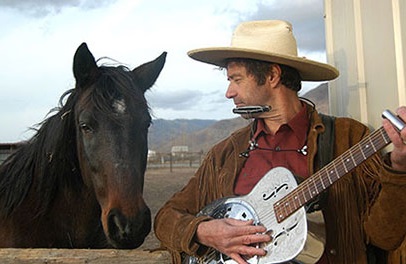
“They were right here. On this meadow. You had about 40 head here, with their calves. These two big wolves walked right through the middle of them.”
“How big were they?”
“I don’t know. Maybe 150 pounds. Taller than any dog. Big and lean looking. They walked through the cows, slowly, like. But here’s the kicker. Your cows didn’t even seem to take notice of them. They just kept on grazing. Those wolves were sometimes within 10 or 20 feet of them. Some of your cows didn’t even bother to look up.”
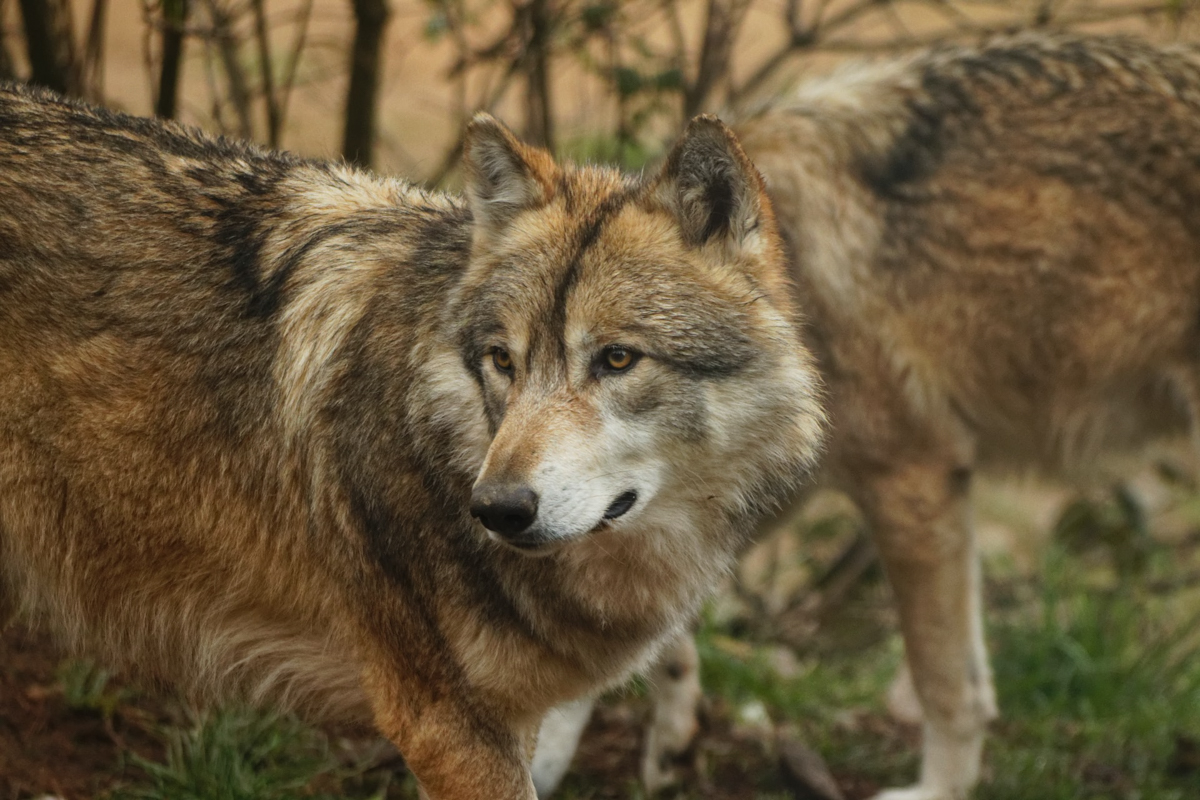
“Is that right?”
“No kidding. It was like those wolves weren’t a threat in any way. I’ve never seen anything like it.”
I couldn’t understand it, and neither could Fred. It was just another example of how much we don’t know about life on Earth, or at least, Hat Creek. Fred put the truck in gear and got ready to head off. “Hey Fred!” I sidled my mare up to his window and bent down so I could look at him. “You know those rocks above your place–those white cliffy ones on the mountainside across from the road over the pass?”
“Yeah.”
“I was up on the road in the middle of the night awhile ago. One of those rocks–the one shaped kinda like a horse head–seemed like it glowed. Have you seen it?”
Fred smiled a slow smile as he looked forward. “Yeah.” He nodded and turned toward me. “I have. I know what you mean.” The diesel rattled under him.
“What’s going on with it? Do you have any idea what causes it?”
“No idea.” His leg let the powerstroke clutch out, keeping that smile, slowly turning his gaze from me to the road as he drove away in a wisp of diesel smoke and dust.
My own smile followed Fred up the road until he was gone. He was OK with the unknown. I am too.
Happy trails!
Glenn, Caryl and Girls at Alderspring

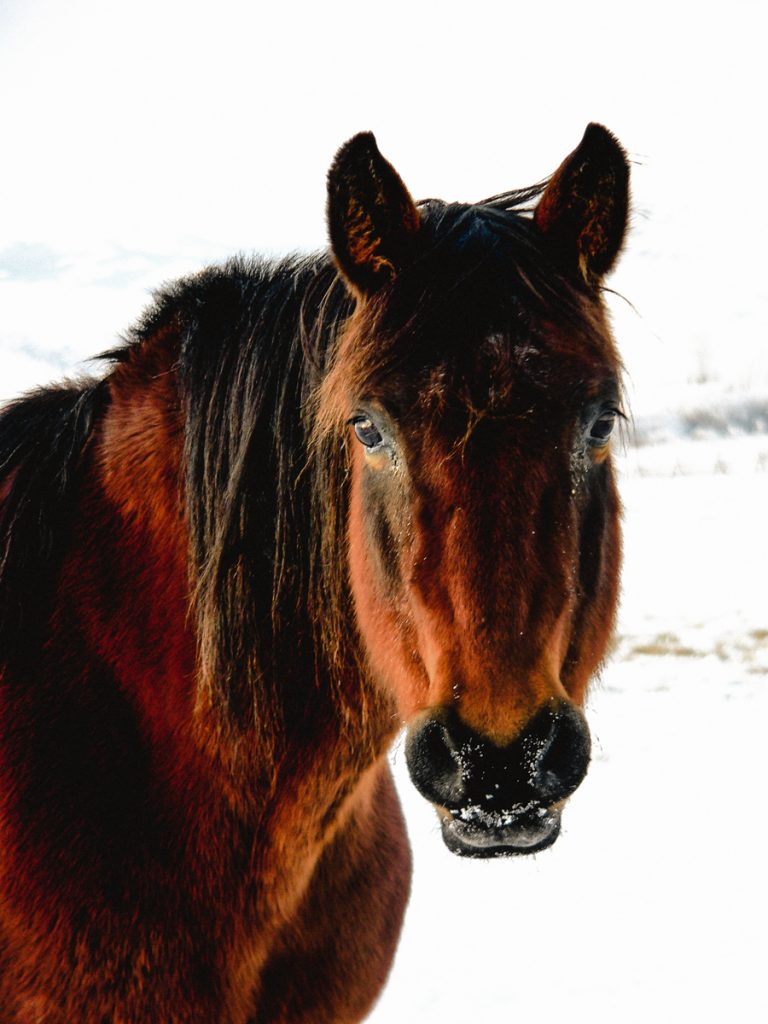
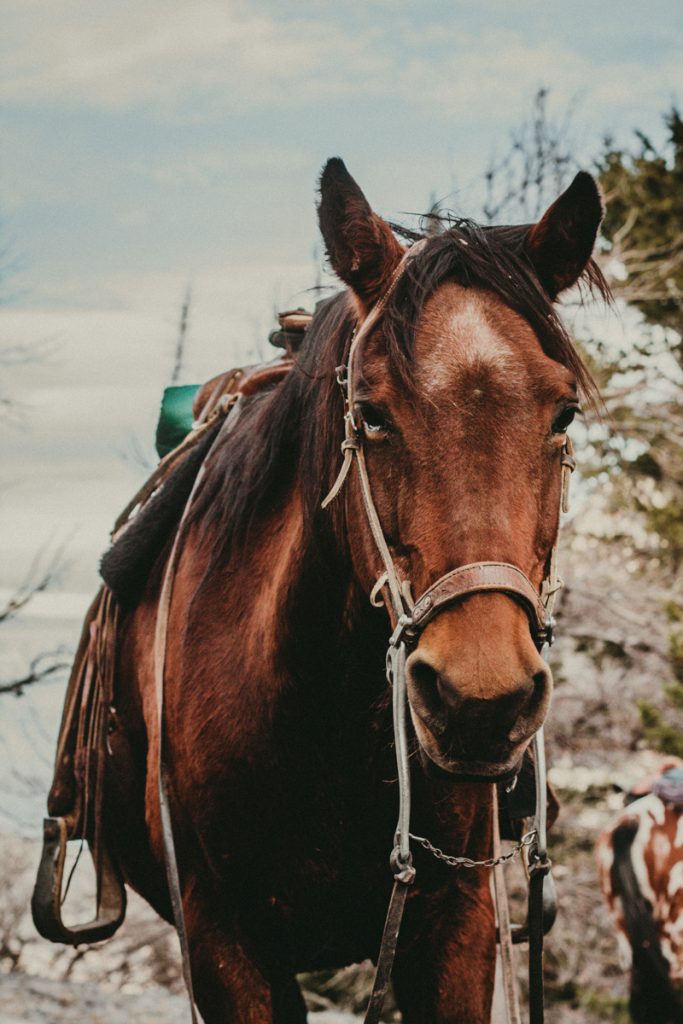
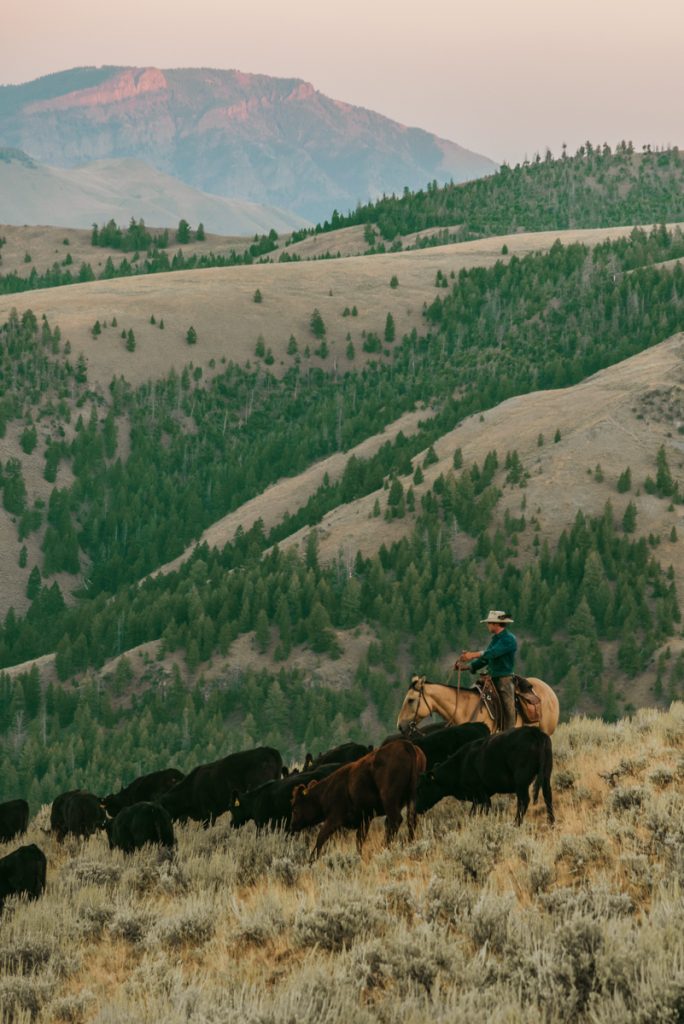
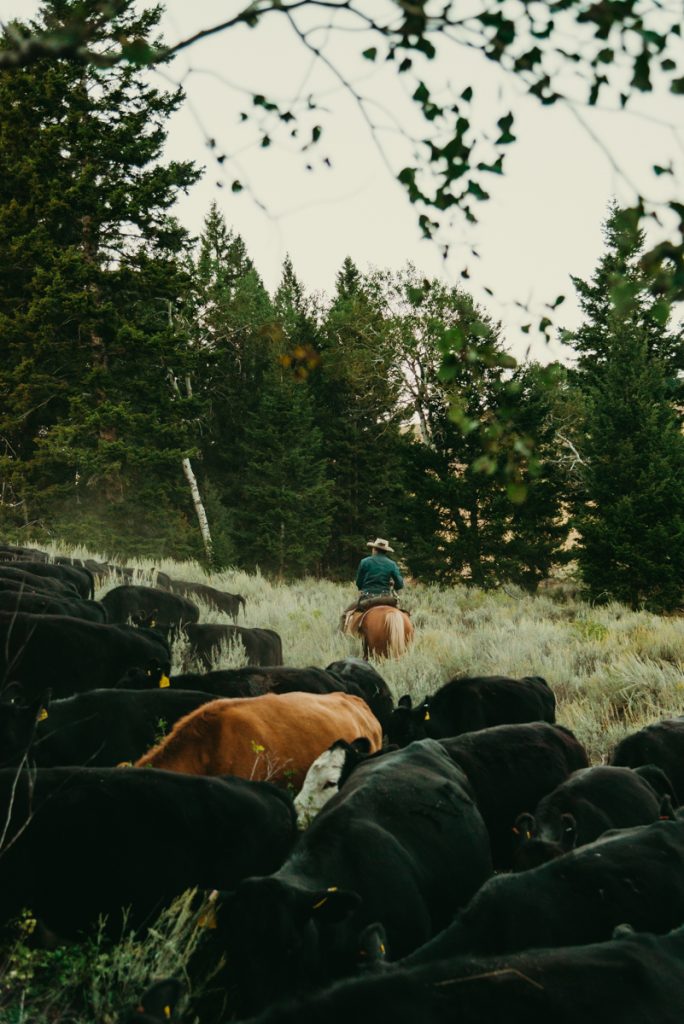

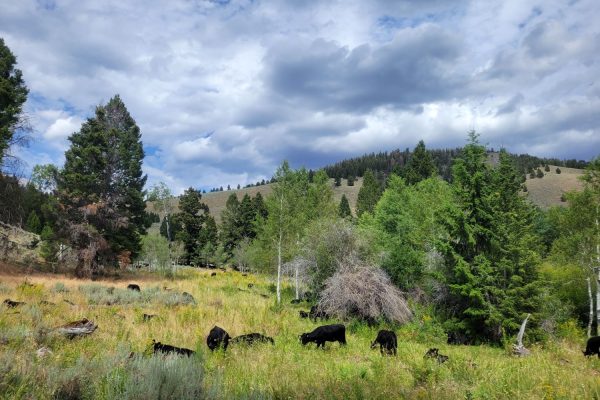
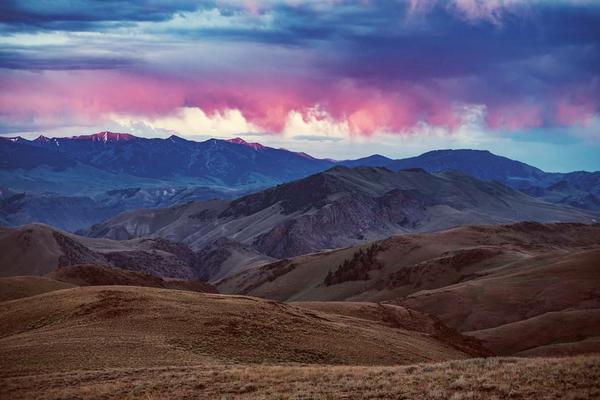


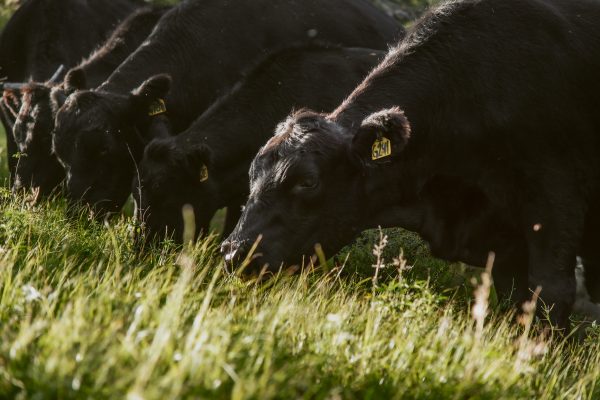
Terry
Such a satisfying read. Like having enough butter on that piece of sourdough to leave teeth marks, something to get my teeth into. Thanks for what you do.